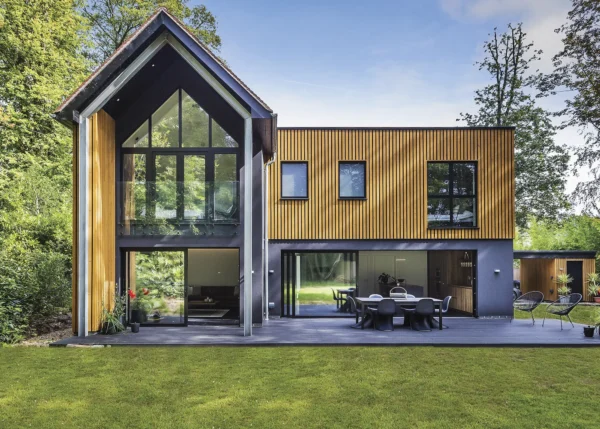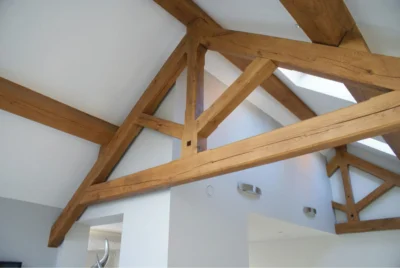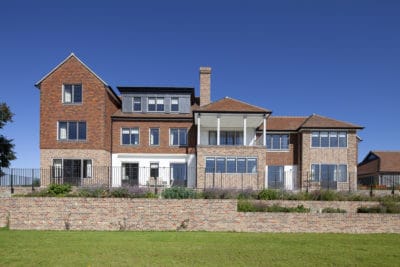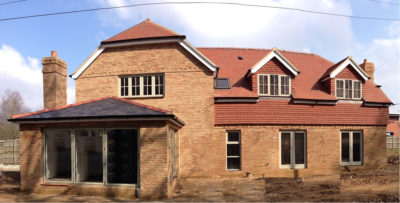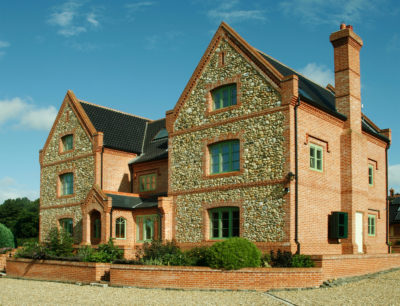Metal Cladding Options Explained
Whatever type of project you’re working on – whether self-build, renovation, extension or conversion – using metal cladding gives you the chance to achieve a highly individual design.
Available in a wide range of materials, profiles and colours, it’s a fantastic choice for contemporary schemes but also fits the bill for a variety of traditional projects – barn conversions being one of the most notable.
Metal cladding can be laid vertically, horizontally or diagonally to suit your tastes, and is even capable of being applied to curved facades and a variety of unusual shapes. It’s available in a range of corrugated and other profiles, or can be laid flat as part of a panelised installation for an ultra-modern effect.
What’s more, it works fantastically alongside a whole host of cladding materials – including render and timber.
Choosing a metal
There are four key materials to choose from: steel, aluminium, zinc and copper. Modern production techniques mean that metals can be pre-aged, coated to preserve the original shine or supplied in a huge range of painted and powder-coated hues according to your preference.
But there’s more to consider than simply the metal and finish – the profile shape and jointing type can have a surprising effect on the perceived colour and texture of your cladding, for example.
If possible, ask to see some examples of your preferred option in situ – and try to view the surface at different times of the day in order to get an accurate picture of what the end result will be like.
If you’re using external fasteners to attach the cladding, be sure to select robust fittings that suit the look you’re going for – colour-matched versions with plastic heads are a common choice. Here’s what you can expect from the major metal finishes:
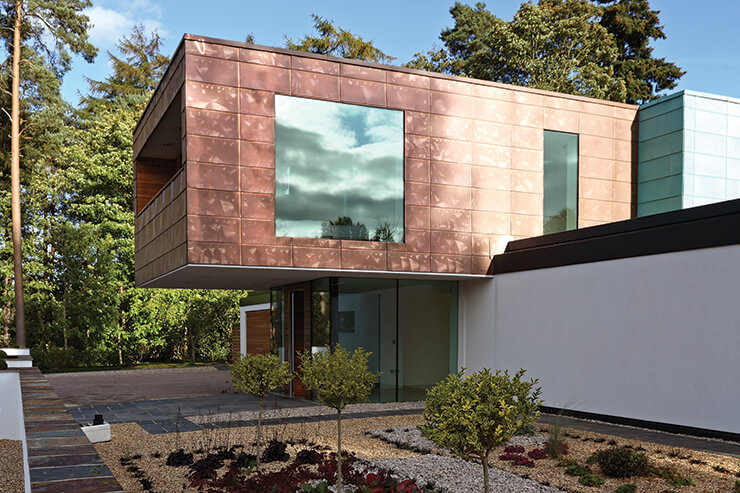
This contemporary home by Nicolas Tye Architects features a cantilevered box clad in KME Tecu, which is made using 100% recycled copper
Steel cladding
This is usually supplied hot-dip galvanised (typically with zinc or a zinc-aluminium alloy) to provide a robust finish. It’s available in a huge range of colours and effects, from high-gloss reflective surfaces to pretty much any factory-painted hue.
Steel is probably the most affordable metal cladding in terms of up front costs and offers a good life expectancy of 35+ years, but it’s not quite as durable as the other metals.
Aluminium Cladding
Steel’s main rival is an extremely lightweight material, which can help to minimise loads on the building and potentially reduce your outlay on foundations.
As aluminium’s surface oxidises it produces a hard, dense protective layer that prevents corrosion, giving this cladding a lifespan of 40 years or more. Coatings can be added to further enhance its natural qualities or to achieve the colour and finish you desire.
Zinc Cladding
Boasting a silvery aesthetic when freshly installed, which weathers to an attractive lead-like hue over time if left untreated, zinc is a highly durable surface.
It can easily achieve well over 50 years of service thanks to the protective patina it cultivates. As well as its natural greyish hue, it’s also available in a pre-weathered black finish.
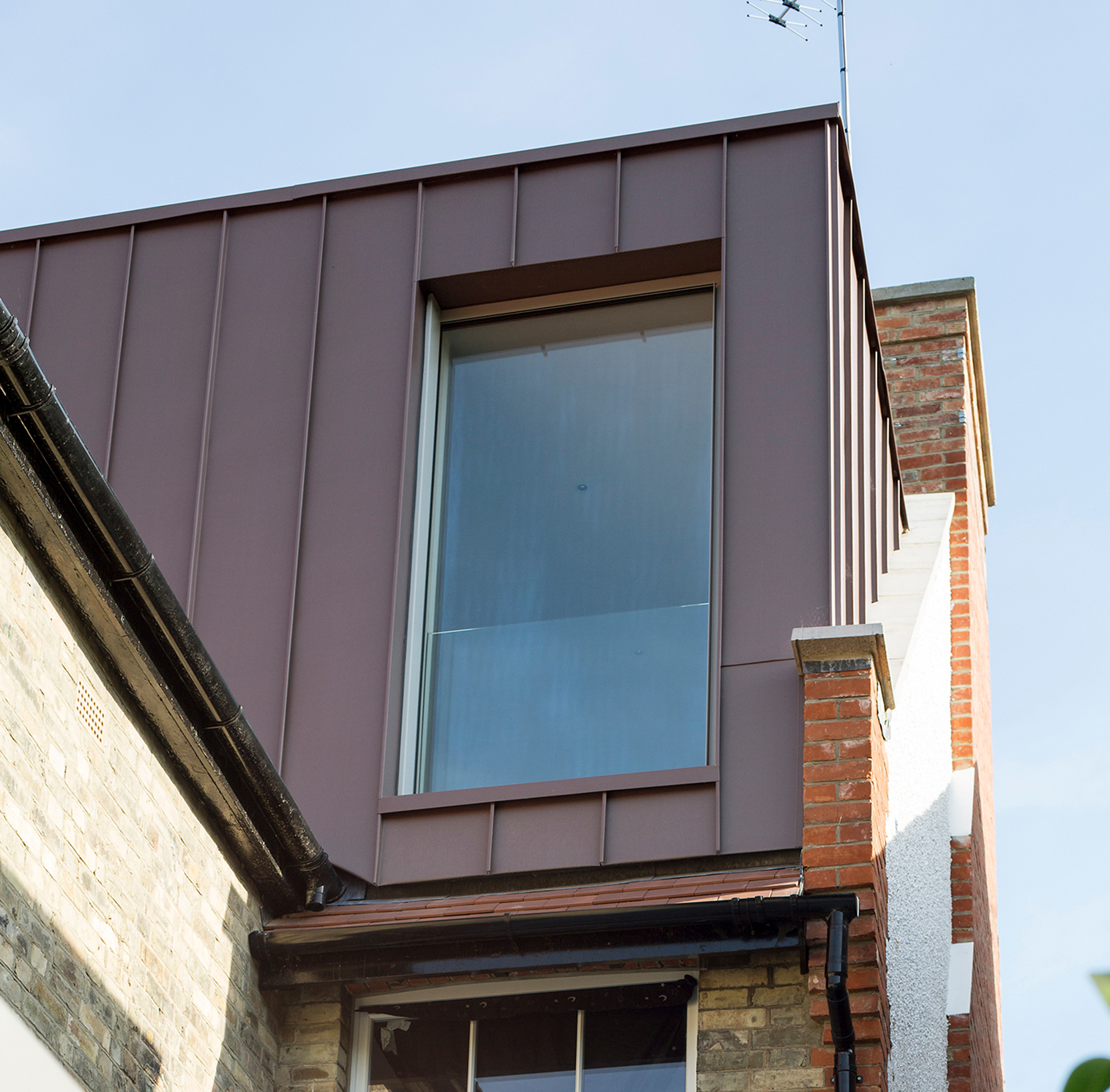
This loft conversion in north west London is the work of Carver Farshi, a partnership between Studio Carver and Daniel Farshi Architects. The designers chose red zinc cladding to complement the Edwardian home’s heritage clay tiles. The large, sliding glass window provides expansive views of the surroundings. |
Copper Cladding
This elegant metal is prized for its ability to develop a self-protecting and virtually maintenance-free verdigris patina that ensures a long lifespan of 100 years or more.
If left to age, copper will mellow from bright golden-bronze tones through dark browns to a characteristic blue-green finish.
New products include mesh-style claddings with colour-preserving coatings that can create a highly individual look.
Installing metal cladding
While corrugated sheeting remains a popular finish for barns and industrial-style projects, there’s a variety of metal cladding systems available to suit different schemes – ranging from surfacing new buildings to providing a quick, aesthetically-pleasing upgrade to existing structures.
Whichever option you choose, fitting metal cladding is a job for a specialist contractor. It’s vital that your site team pays close attention to elements such as air tightness liners and membranes, lapping joints and flashings to ensure an efficient, easy-to-maintain weatherproof covering. Here are the key routes:
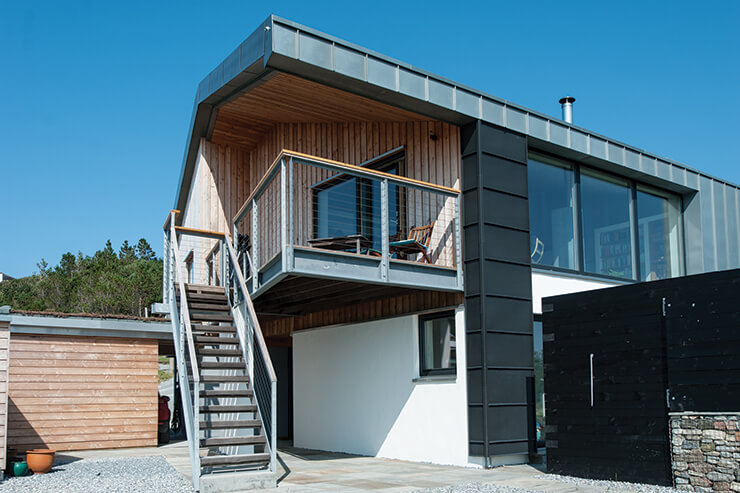
Conceived by architects Rural Design, this stunning self-build home features attractive zinc standing seam roof and wall cladding (at a finished cost of £35,600). Combined with crisp white render and vertical timber boarding, this creates the impression of an agricultural building that blends beautifully into its spectacular Highland setting
Built-up sheeting cladding
As the name suggests, this type of cladding is assembled on site. It usually consists of four key components: a thin internal liner that ensures air tightness; insulation (usually mineral wool); spacer bars/brackets to support the finish; and the outer facing sheet, which provides weather protection.
The main variation to this comes with the use of structural trays, which double up as liner and fixing point and cope well with long spans. Either way, the external finish is profiled, making it suitable for both traditional and contemporary projects.
Good workmanship is key to the success of this system, both in terms of performance and aesthetics. Sheets can be fitted in vertical, horizontal or diagonal patterns – and are usually held in place with self-tapping fixings that are designed to match your chosen finish.
Curved versions are available, but they’re extremely rigid and unforgiving so require excellent attention to detail during installation.
Composite cladding
These prefabricated cladding elements are delivered to site as complete panels, which makes them quick and easy to install – although you should still use a specialist contractor for the work.
They feature an insulating foam core, usually of high-quality polyisocyanurate (PIR), which bonds autohesively to the inner and outer skins.
You can choose between profiled or flat facings in a huge range of colours and coatings, with the panels either screwed into place or secret fixed for a seamless appearance.
Cassette cladding
Similar to composites, these factory-produced cladding panels include insulation and liners out of the box.
The key difference is that they’re designed with easy-to-use interlocking jointing systems for ultra-quick installation.
Rainscreen cladding
Metal cladding can also be specified in rainscreen format, where the outer face is lightweight and non-load-bearing. It’s attached to an insulated, airtight backing but separated from this principal structure by a ventilated cavity that allows moisture to drain away harmlessly.
Rainscreen cladding minimises the risk of condensation, which makes it an attractive option for renovating existing structures, and also allows for plenty of design flexibility.
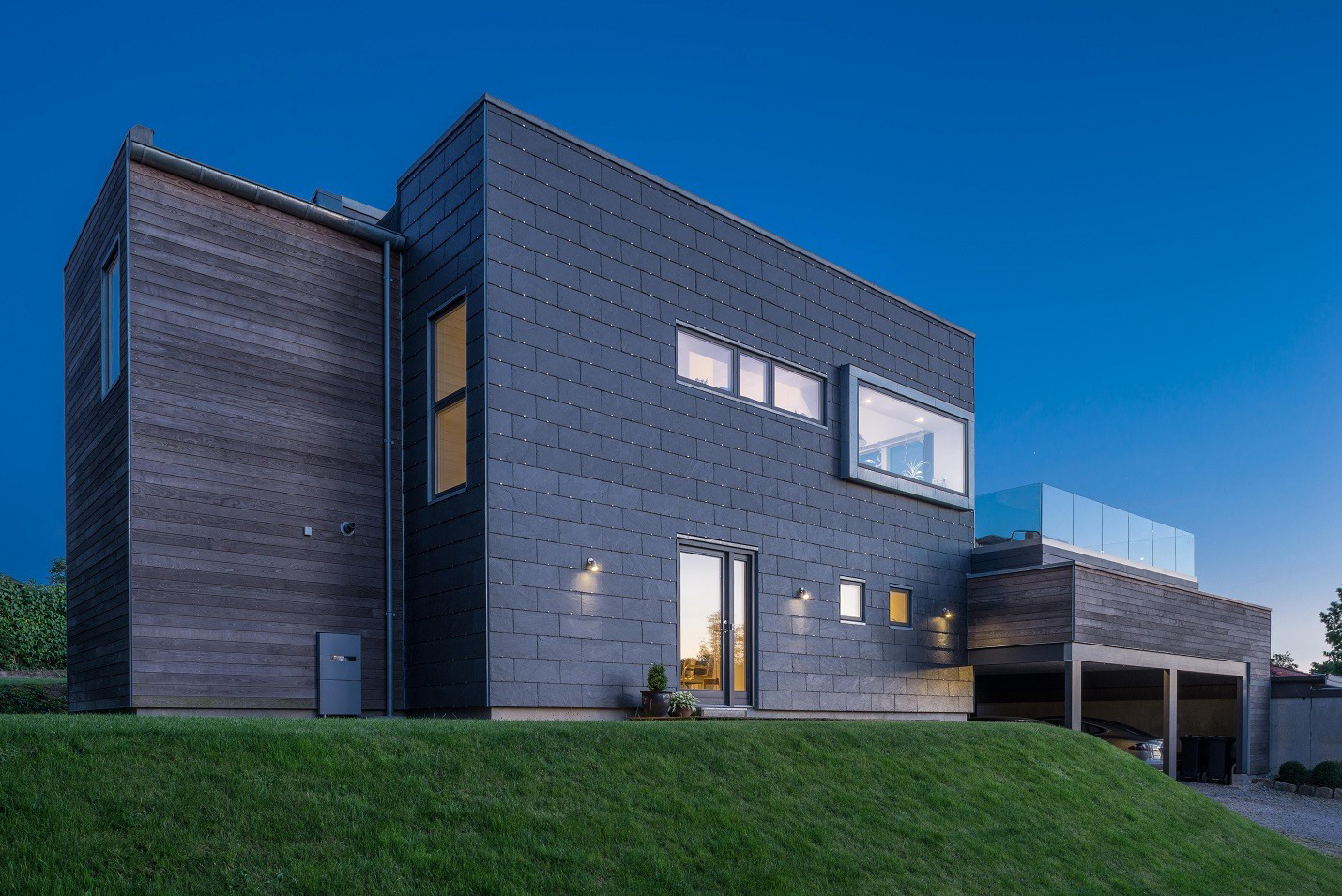
Get the look: Cupaclad Rainscreen Cladding from Cupa Pizarras |
Standing seam
With this system, there’re no exposed mechanical fasteners between adjacent metal sheets. Instead, a special weathertight clipped joint is used, creating a distinctive projecting seam – which can be vertical, horizontal or diagonal.
This type of cladding can be supplied either as pre-insulated panels or as sheets of material that are formed and crimped on site, and applied to plywood or a similar substrate.
The advantage of the latter method is that it allows for huge freedom of expression in design – including elegant curves and features such as unbroken finishes across walls and roofs. But do bear in mind that it requires a much greater degree of workmanship on site.
Metal cladding maintenance
In general, metal claddings are easy to keep in top condition – in fact, some products come with 20+ year maintenance-free warranties thanks to their advanced coatings. Good detailed design can help, too – ask your architect to try to minimise common areas of debris build up, such as beneath overhangs and gutters where the cladding won’t be naturally washed by rainfall.
Light colours can be a good choice, too, as they reflect heat and thus help to reduce degradation of coatings.
It’s a good idea to inspect the surface annually. If dirt does build up, follow the manufacturer’s cleaning instructions. Typically, all that’s required is to wash the surface with a hose and soft cloth before rinsing away the loosened dirt.
For heavier deposits, a very weak solution of good-quality household detergent may be appropriate. Most scratches will simply form part of the patina, but deep abrasions can be treated with touch-up paints.
Metal cladding cost guide
As the price of metal fluctuates significantly, it’s difficult to give hard-and-fast prices.
On top of that, your choice of a sheet, panelised or standing seam system will have an influence on the final figure.
But in general you can expect to pay at least £35 per m2 for steel and aluminium claddings (plus installation) and significantly more for high-spec metals.
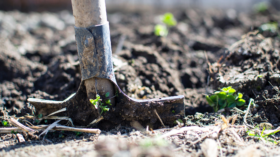
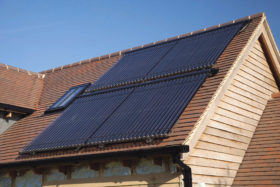































































































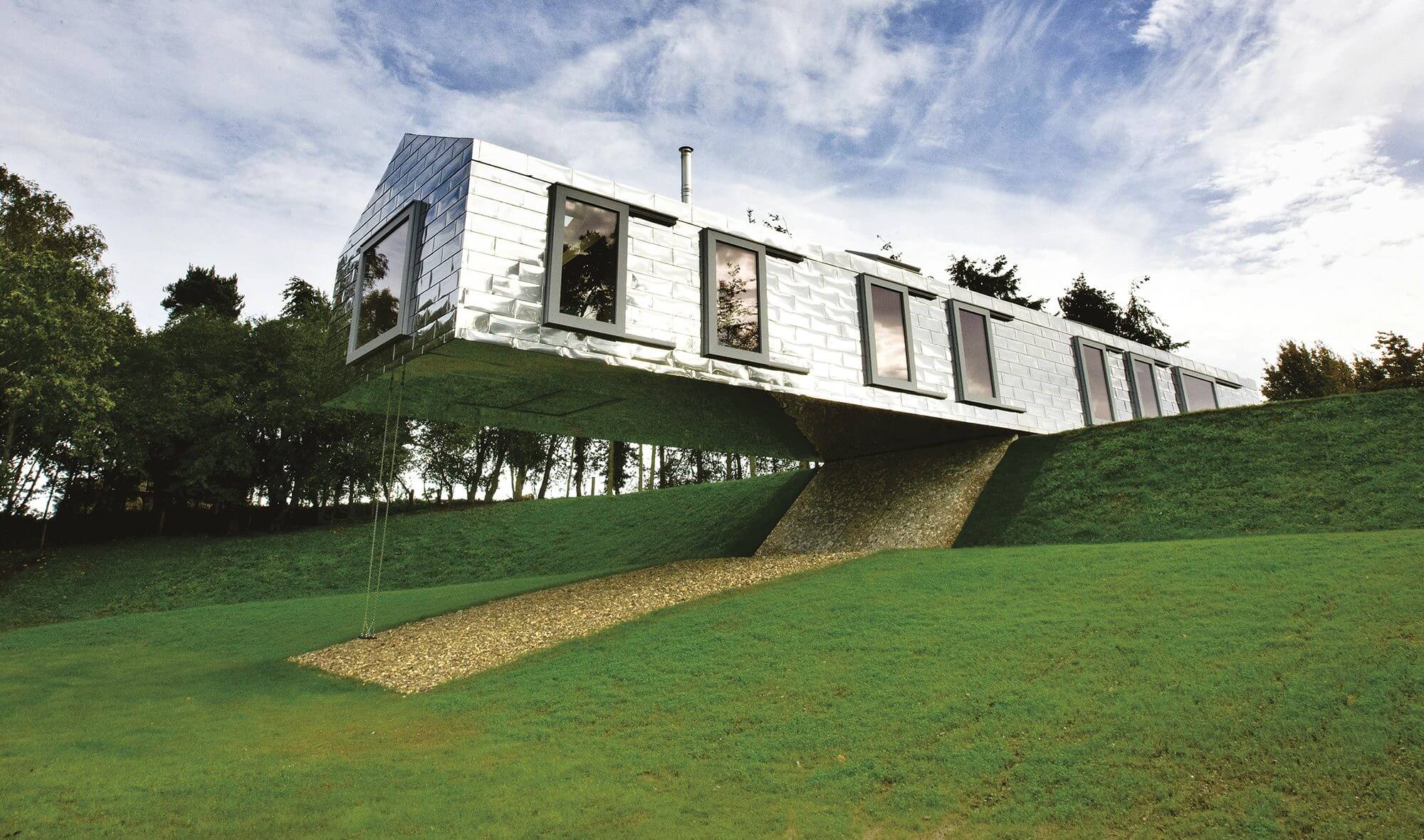
 Login/register to save Article for later
Login/register to save Article for later


